12 Fast-Growing Flowers Perfect for Novice Gardeners
If you are new to gardening or just want quick results, planting fast-growing flowers is a great way to see beautiful blooms in no time. Some flowers sprout and bloom much faster than others, making them perfect for impatient gardeners. With the right seeds, you can enjoy a vibrant garden without having to wait for months. This article will highlight some of the easiest and quickest-growing flower seeds that will help you create a colorful garden in a short amount of time.
This post may contain affiliate links, which helps keep this content free. Please read our disclosure for more info.
Nigella
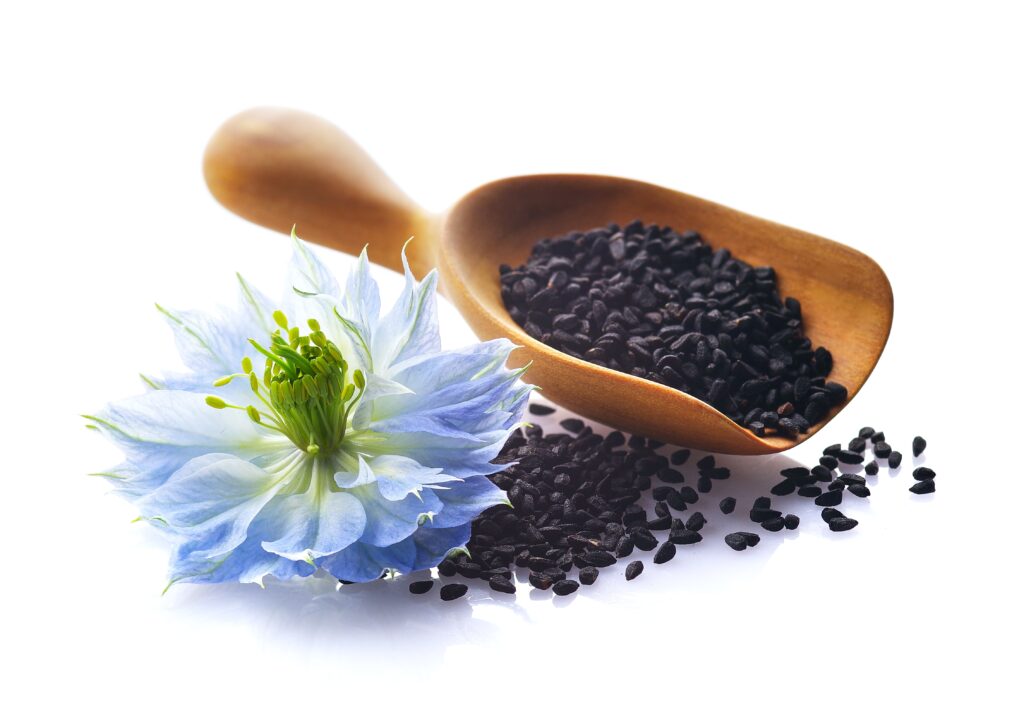
Nigella, also known as Love-in-a-Mist, features delicate, fern-like foliage and striking flowers that range from white to shades of blue and purple. These flowers have a unique, almost wispy appearance, with petals that are finely shaped and surrounded by a tangle of feathery bracts. Nigella thrives in full sun and well-drained soil, making it suitable for temperate climates with mild winters. The plant reaches a height of around 18 inches and can handle light frost, blooming approximately 12 weeks after sowing.
Nigella is a hardy annual, often used in borders and wildflower gardens for its beauty and texture. It can withstand drought conditions once established, though it prefers moderate moisture. The plant is self-seeding, which means it will often return the next year without any effort from the gardener. Additionally, Nigella attracts pollinators like bees and butterflies, making it a great addition to any eco-friendly garden.
Borage
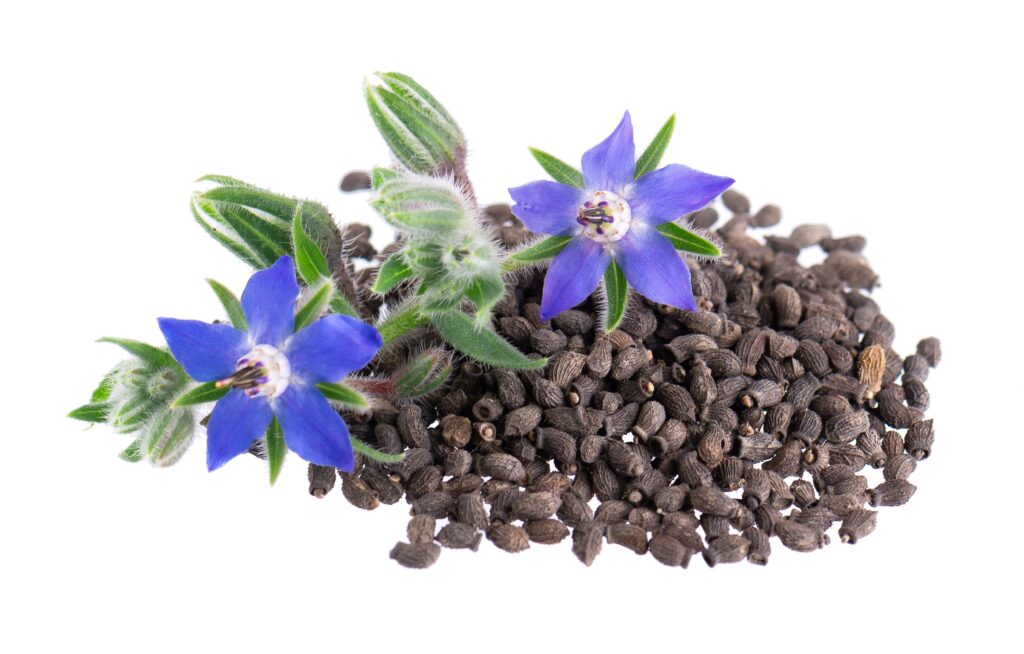
Borage is an herb that produces vibrant blue, star-shaped flowers with a slightly fuzzy texture, adding a whimsical touch to any garden. Its leaves are large and covered in fine hairs, which give the plant a soft, silvery appearance. Borage prefers full sun and well-drained, slightly alkaline soil, and it can endure a variety of weather conditions, including mild frost. This annual plant grows quickly, typically blooming around 8-10 weeks after sowing, making it a fast grower for impatient gardeners.
Borage is often grown for its culinary and medicinal uses, as its leaves and flowers are edible. It attracts pollinators like bees, which helps improve the health of other plants in the garden. The plant also thrives in moderate to dry conditions, though it benefits from occasional watering in drier climates. Once the flowers bloom, they last for several weeks, adding color and interest throughout the growing season.
Snapdragons
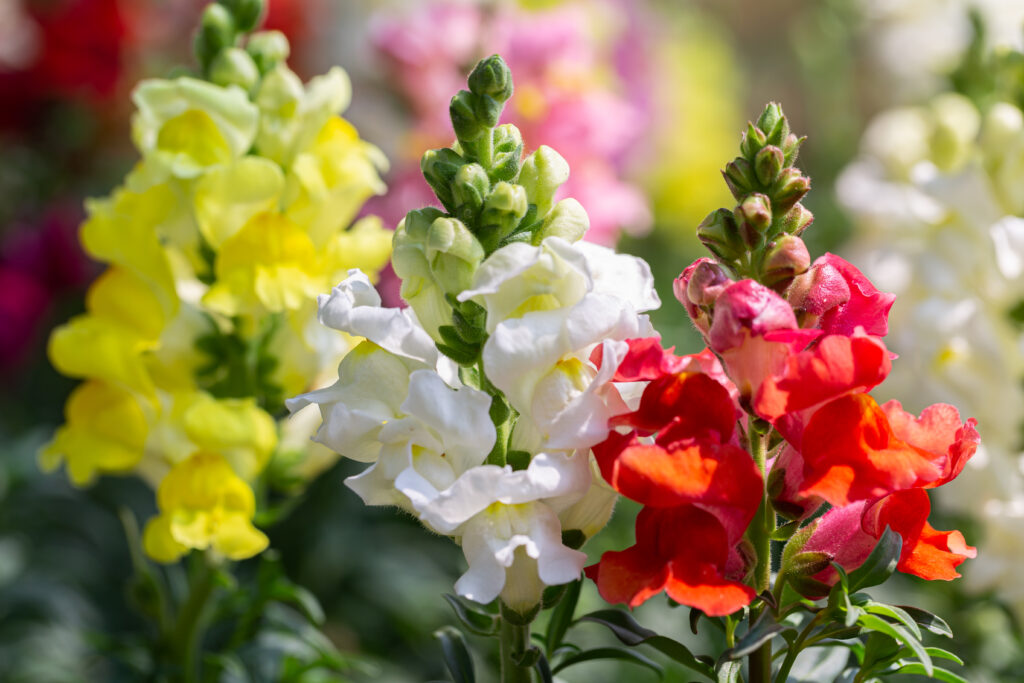
Snapdragons are known for their tall, spike-like flower clusters in a wide range of colors, including red, pink, yellow, and white. Their flowers have a unique shape, resembling a dragon’s mouth that opens and closes when squeezed, which is why they are named Snapdragons. This plant thrives in full sun to partial shade and is ideal for cooler climates, withstanding light frosts. Snapdragons typically bloom within 8-10 weeks from seed, offering colorful flowers that can last through the growing season.
Snapdragons grow to a height of about 1 to 3 feet, depending on the variety, and can be planted in containers, flower beds, or borders. They prefer slightly moist, well-drained soil and can tolerate some drought once established, though they perform best with regular watering. These flowers are known for attracting bees and butterflies, making them a wonderful choice for pollinator-friendly gardens. They are also excellent for cutting, as their long stems make them perfect for floral arrangements.
Spider Flower
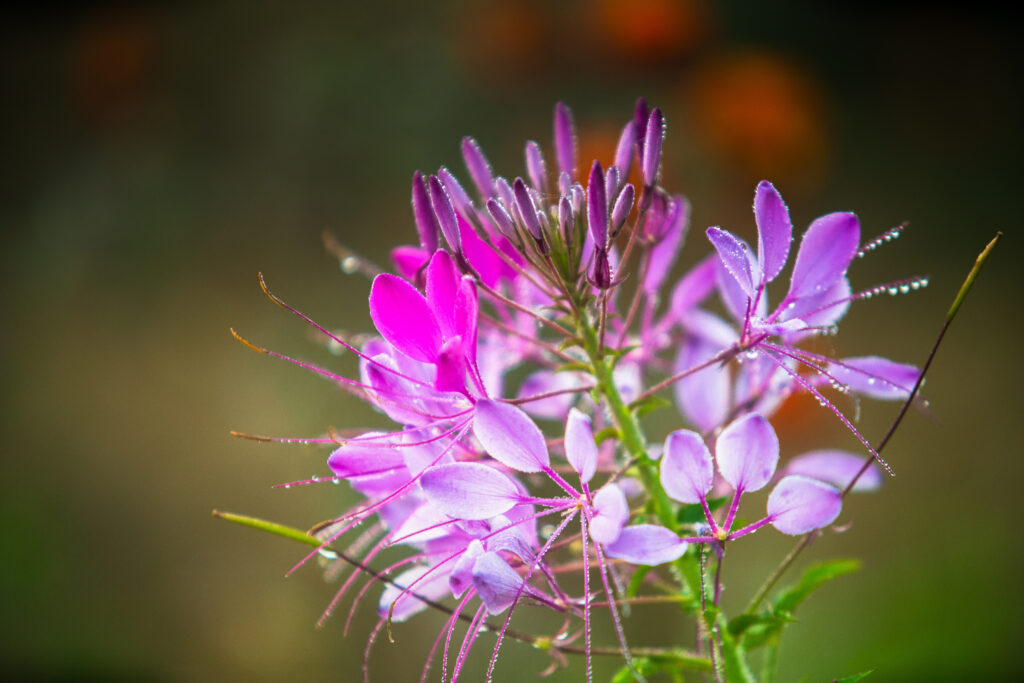
Spider Flower, or Cleome, produces unique, spidery blooms with long, thin petals that create an airy, delicate look in the garden. The flowers come in shades of pink, purple, and white, standing tall on thick stems that can reach up to 5 feet in height. Spider flowers grow best in full sun and tolerate hot, dry weather, making them perfect for summer gardens. They bloom about 12 weeks after sowing, creating a striking display of flowers through the warmer months.
These plants are easy to grow from seed and thrive in well-drained, slightly acidic soil. Spider flowers can handle drought conditions once established but appreciate regular watering during particularly hot periods. They also attract pollinators such as bees and butterflies, adding life to your garden. The plant is known for reseeding itself, meaning it will often come back the following year, providing color with minimal effort.
Larkspur
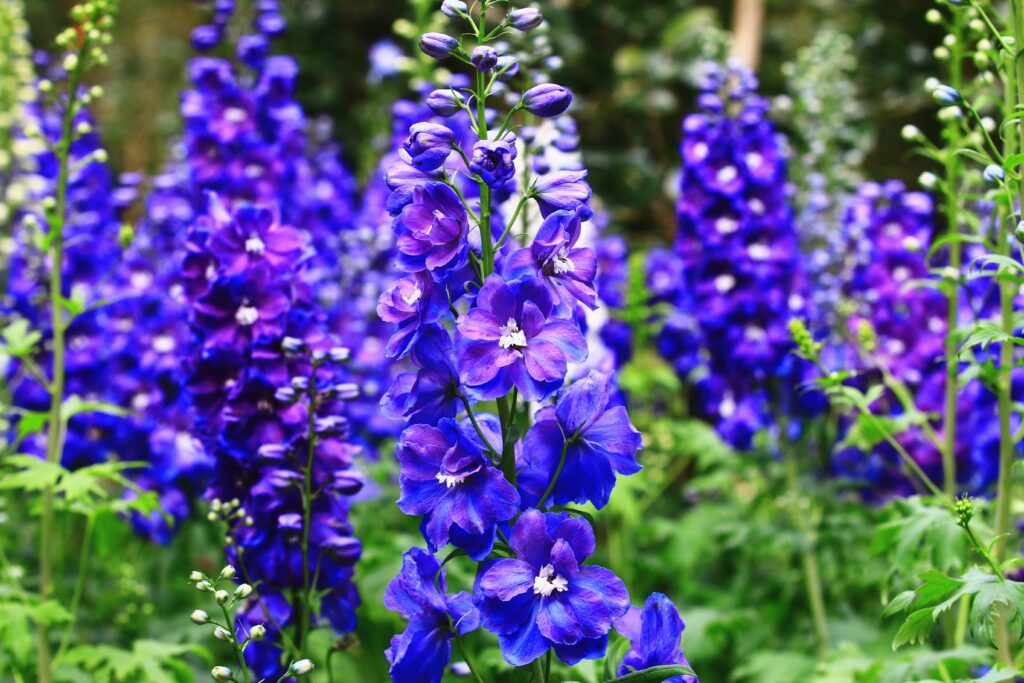
Larkspur produces tall, slender spikes of flowers in shades of blue, purple, and white, making it a dramatic addition to any garden. The flowers are highly fragrant and have a delicate, almost ethereal look that contrasts beautifully with the plant’s deep green foliage. Larkspur grows best in cool climates with well-drained soil and plenty of sun. The plant will bloom approximately 12-16 weeks after sowing, with some varieties even reaching heights of 5 feet or more.
Larkspur is an annual that performs well in both garden beds and containers, thriving in temperate climates with mild winters. It is a hardy plant that can withstand light frost but will struggle in extreme heat, making it ideal for spring and early summer gardens. Larkspur prefers moderate moisture and regular watering, especially during dry spells. The plant also attracts pollinators like bees, ensuring that your garden remains full of life throughout the blooming period.
Sunflower
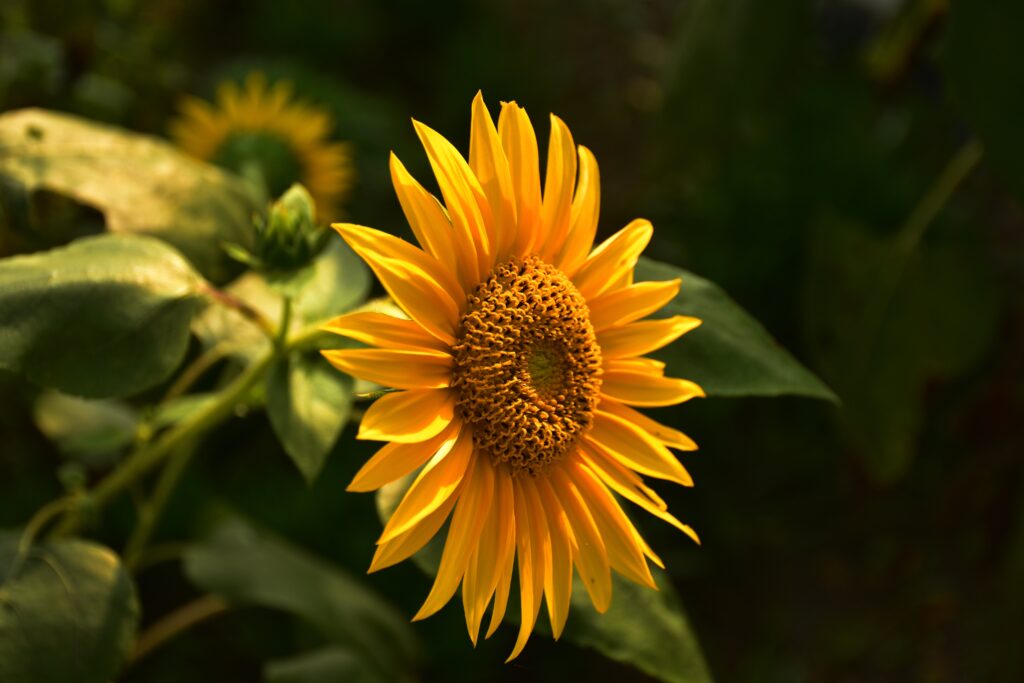
Sunflowers are instantly recognizable, with large, bright yellow petals surrounding a central dark brown or black seed head. These iconic flowers grow quickly and can reach heights of 5 to 12 feet, depending on the variety. Sunflowers thrive in full sun and are heat-tolerant, making them perfect for warm climates with long, sunny days. Typically, they will bloom about 70 to 85 days after sowing, giving you a bright display of flowers during the summer.
Sunflowers are known for their resilience and can tolerate drought conditions once established, though they will perform best with regular watering. The seeds they produce are edible and can be harvested for snacks or to attract birds to your garden. They are often used as a backdrop plant in gardens or as standalone features in sunny spots. Sunflowers are also excellent for attracting pollinators like bees, making them a great addition to any garden aiming to support local wildlife.
California Poppy
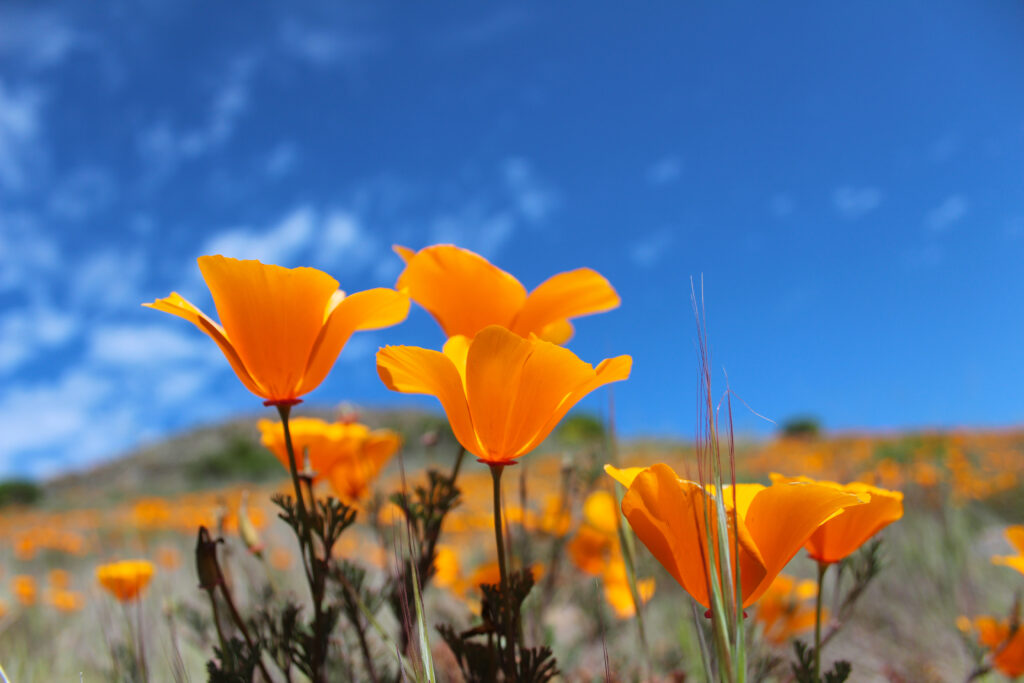
California Poppies are known for their vibrant orange, red, and yellow flowers, which can brighten up any space with their cheerful colors. These hardy flowers have delicate petals and thin, feathery foliage that give them a light, airy appearance. They grow best in full sun and are highly drought-tolerant, thriving in well-drained soil with little need for watering once established. California Poppies bloom within 8-10 weeks of sowing and will continue to flower through the warm months.
These flowers are perfect for gardeners in dry, sunny climates, as they can endure hot weather with minimal care. California Poppies self-seed easily, meaning they can return year after year with little effort on the gardener’s part. They attract pollinators like bees and butterflies, which makes them a fantastic addition to wildflower gardens or any eco-friendly landscape. Their bright colors and resilience make them an easy choice for novice gardeners looking for low-maintenance beauty.
Nasturtium
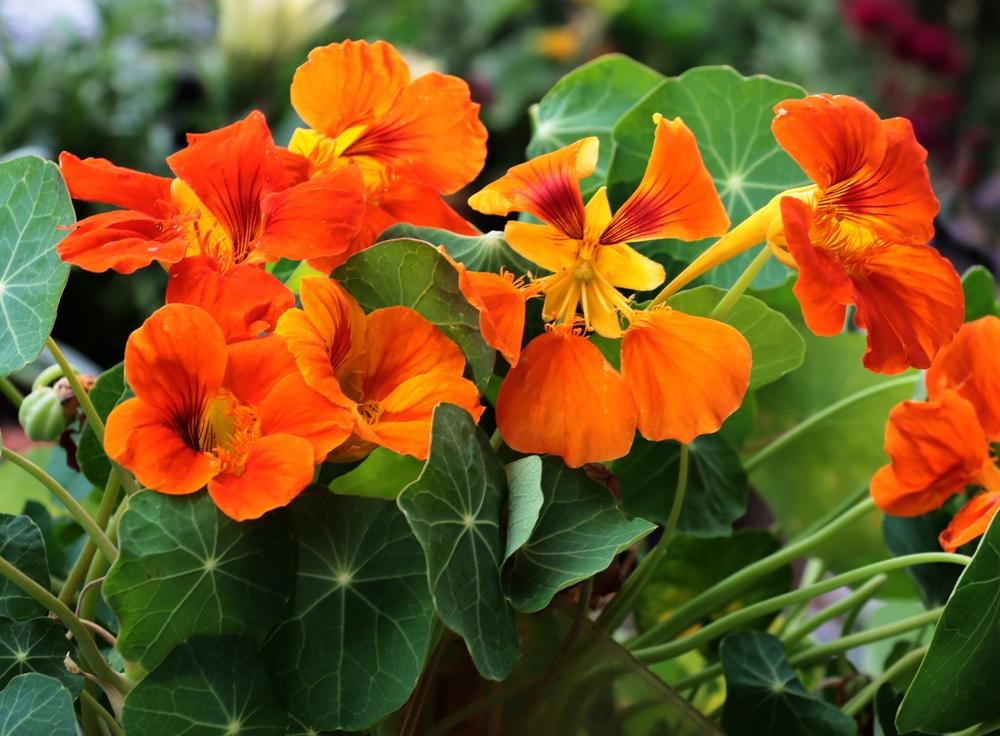
Nasturtiums are unique flowers known for their vibrant colors, including shades of orange, yellow, and red, and their round, green leaves that often have a slight peppery scent. The flowers have a distinctive, funnel-like shape that makes them stand out in any garden. These plants are perfect for sunny spots and thrive in well-drained soil, tolerating a wide range of temperatures. Nasturtiums bloom within 8 to 10 weeks of sowing, offering a quick, colorful display.
Nasturtiums are great for ornamental gardens and are also edible, with both the flowers and leaves offering a peppery flavor that can be used in salads and garnishes. They grow best with moderate watering, as they prefer dry conditions once established. Nasturtiums can also help deter pests, making them a useful companion plant in vegetable gardens. These flowers are easy to grow and require minimal care, making them a great option for beginners.
Hollyhock
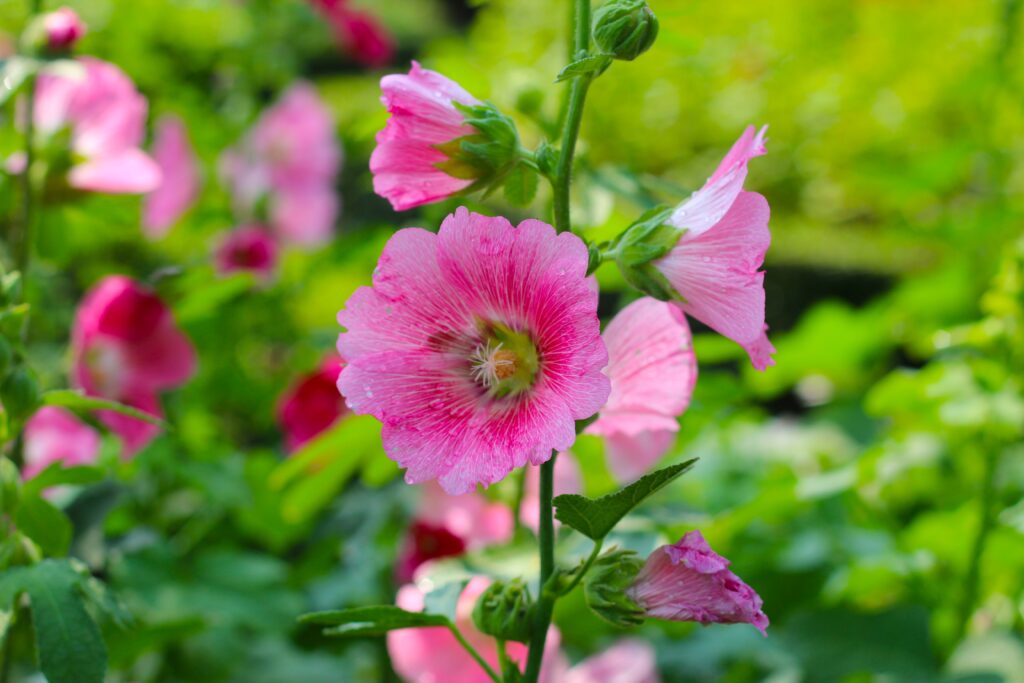
Hollyhocks are tall, stately plants with clusters of large, colorful blooms in shades of pink, red, purple, and white. These flowers grow on thick, sturdy stems and can reach heights of 6 to 8 feet, making them an excellent focal point in gardens. Hollyhocks thrive in full sun and well-drained soil and are moderately drought-tolerant once established. The plants typically bloom in the second season, about 12-16 weeks after sowing, producing flowers that last throughout the summer.
These biennial plants are often grown in cottage gardens, as they add height and texture to flower beds. While hollyhocks can withstand light frost, they perform best in cooler climates and may struggle in excessive heat. They require regular watering but should not be overwatered, as this can cause root rot. Hollyhocks are also known to attract pollinators like bees, making them a fantastic choice for supporting local wildlife.
Calendula
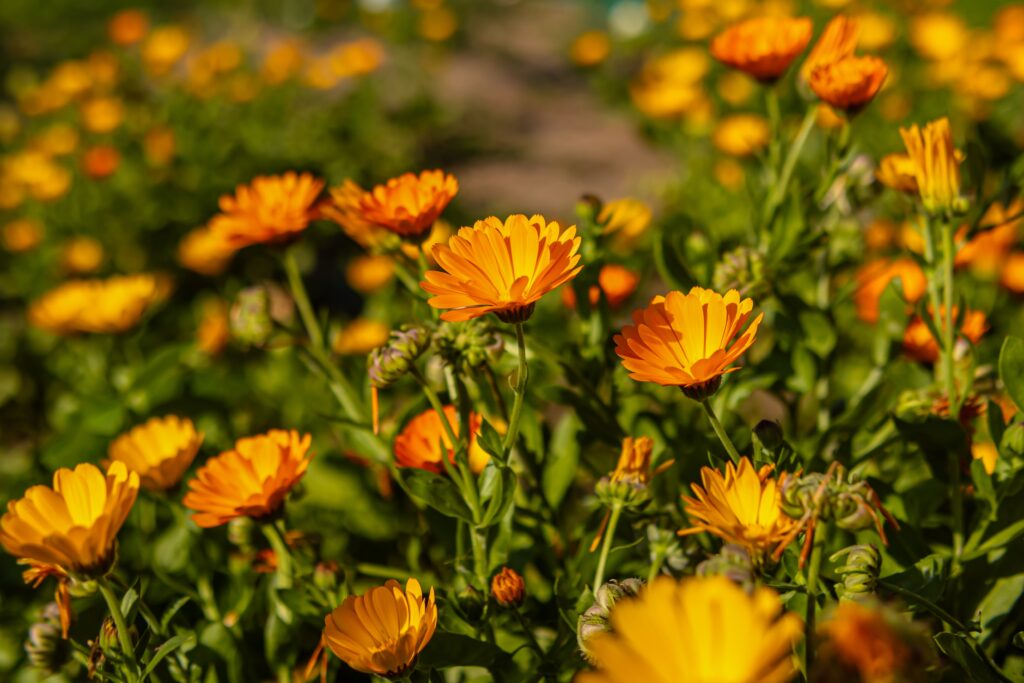
Calendula, often called pot marigold, produces bright orange or yellow flowers that are both beautiful and useful. The flowers have a daisy-like shape, with large, rounded petals that contrast nicely with their dark centers. Calendula thrives in full sun and is relatively frost-tolerant, making it an excellent choice for cooler climates. Typically, these flowers bloom 8-10 weeks after sowing, offering continuous color throughout the growing season.
Calendula is known for its medicinal properties, as its petals can be used to make soothing teas and creams. The plant prefers moderately moist soil and benefits from regular watering, especially during dry spells. It is easy to grow from seed and will often self-seed, returning year after year. Calendula is also attractive to pollinators like bees and butterflies, making it a beneficial addition to any garden.
Morning Glory
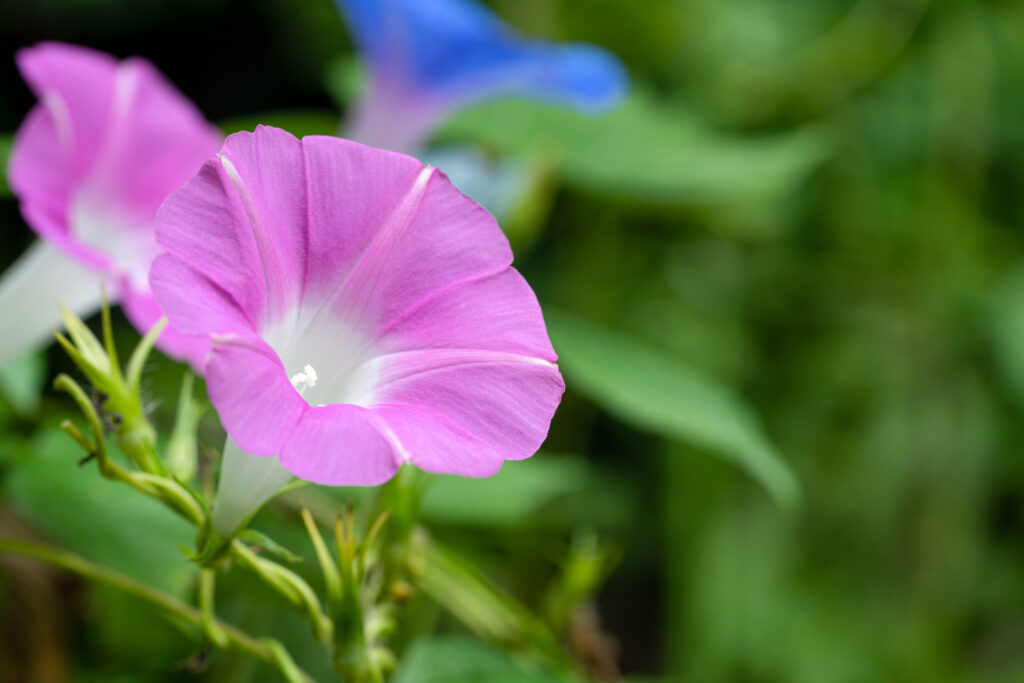
Morning Glory is a fast-growing, climbing vine that produces trumpet-shaped flowers in shades of blue, purple, pink, and white. The flowers bloom in the morning and close by afternoon, creating a beautiful daily display. This plant thrives in full sun and well-drained soil, growing quickly to cover fences, trellises, and arbors. It typically blooms within 8-10 weeks of sowing, providing vibrant color throughout the summer months.
Morning Glories are heat-tolerant and grow best in warm climates, as they require long, sunny days to thrive. These plants can tolerate dry conditions but perform best with regular watering, especially during hot spells. While they are easy to grow from seed, morning glories may require support, as they climb rapidly and need something to attach to. These flowers attract hummingbirds and butterflies, adding movement and life to your garden.
Sweet Alyssum
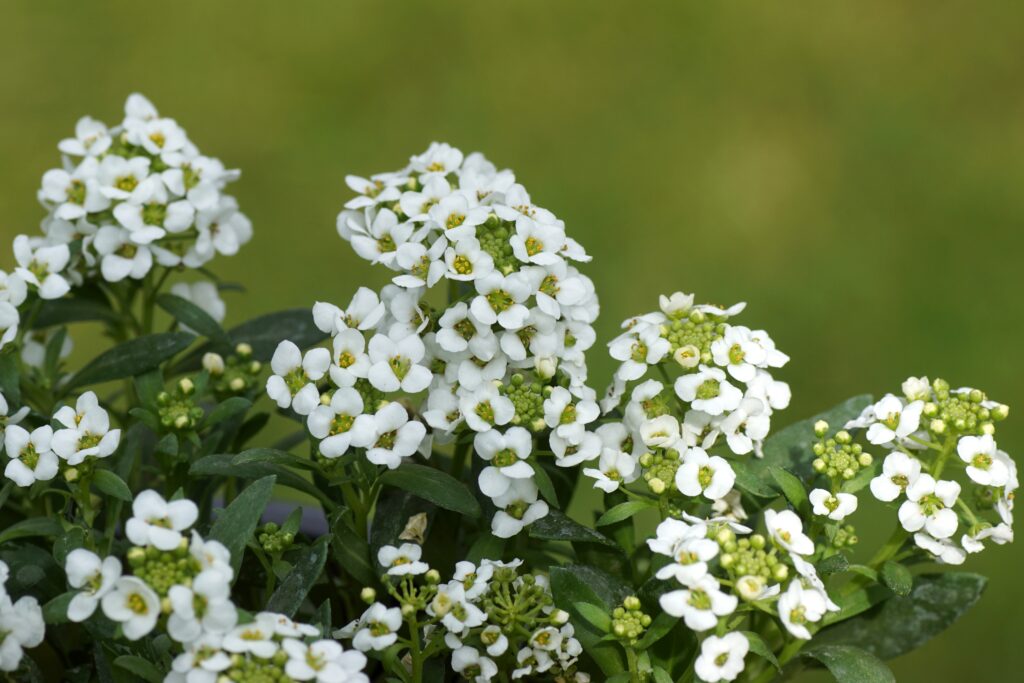
Sweet Alyssum is a low-growing, spreading flower that produces small, fragrant blooms in colors like white, pink, and purple. The flowers are tiny but grow in dense clusters, creating a carpet of color in garden beds or containers. This plant thrives in full sun to partial shade and is very tolerant of cooler temperatures, making it perfect for early spring or fall planting. Sweet Alyssum typically blooms in just 6-8 weeks from sowing, offering a quick and easy way to add beauty to your garden.
This hardy annual is drought-tolerant once established and performs well in a variety of soil types, as long as the drainage is good. Sweet Alyssum attracts pollinators such as bees and butterflies, making it an excellent addition to any eco-friendly garden. It is also known for its pleasant scent, which adds a layer of fragrance to your outdoor space. With its quick growth and ability to withstand different weather conditions, Sweet Alyssum is perfect for beginner gardeners looking for fast results.
This article originally appeared on Avocadu.
